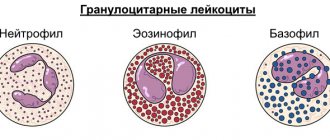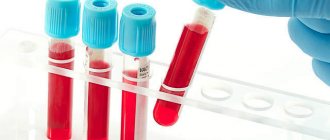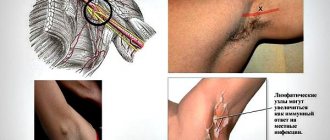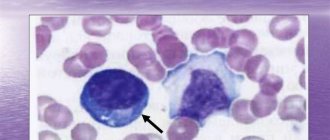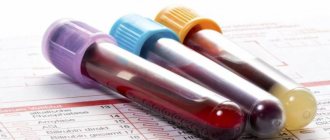- Glucocorticoids
Adrenal hormones are vital biologically active substances that control many processes in the human body, play an important role in regulating metabolic processes, and adapting the body to unfavorable conditions, in particular in stressful situations.
Determination of the concentration of the listed hormones in the blood is required in the following cases:
- If you suspect the presence of diseases of the adrenal glands or some other pathologies.
- To control the ongoing treatment.
- During a preventive medical examination.
Before the analysis, it may be necessary to discontinue the medications used, which contain substances that affect the synthesis of hormones.
Only a doctor can decipher the test results. Treatment (if necessary) should also only be prescribed by a qualified specialist.
When assessing the data obtained, it is necessary to take into account daily fluctuations in the level of adrenal hormones. Preparation rules, research methods, standards and units of measurement may differ in different laboratories.
Introduction to adrenal hormones
Let's take a closer look at what adrenal hormones are and their names. The adrenal glands are small, weighing only 12–16 grams. Each crescent-shaped gland frames the apex of the kidney and is connected to it through branches of the inferior vena cava and the aorta. What hormones do the adrenal glands secrete and what do they do? The adrenal glands produce three fundamental types of steroid hormones: mineralocorticoids, glucocorticoids and androgens (DHEA), precursors of estrogen and testosterone.
Functions of corticosteroids:
- Mineralocorticoids take part in mineral metabolism. Therefore, such preparations of adrenal hormones are used to restore mineral balance in the body.
- Glucocorticoids are classified as steroidal anti-inflammatory drugs and have a corresponding effect. And their ability to suppress the action of the immune system is used in transplantation of tissues and organs to avoid rejection by the body.
The activity of the adrenal glands is interconnected with the functioning of the thyroid gland. Adrenal hormones in turn influence the production of sex hormonal substances. In particular, dehydroepiandrosterone (DHEA) influences the full synthesis of testosterone, progesterone, and estradiol.
Its normal indicators have a wide range of values and differ significantly between women and men:
- In men, 3600–12000 nmol/l.
- In women, 809–9000 nmol/l.
Among the variety of hormones produced by the adrenal glands, the greatest interest is always the well-known highly active substances such as adrenaline (epinephrine), cortisol, corticotropin, aldosterone and DHEA. The leading role in the class of glucocorticoids is, of course, occupied by cortisol and adrenaline. In addition to the dominant hormones of the adrenal cortex, aldosterone is of great importance. This hormone is responsible for regulating electrolyte metabolism. The adrenal hormone aldosterone continually adjusts the overall volume of fluid in a person's body, as well as the proper level of blood pressure. A normal value for women and men is considered to be between 33 and 348 pg/ml.
Description of organs
To find out what slows down or speeds up the work of the adrenal glands, or their other pathologies, you need to consult an endocrinologist. The doctor will not only prescribe a number of necessary tests, but will also conduct a survey and tell you what is necessary to maintain the proper functioning of these glands.
Normally, the adrenal glands have a triangular shape. They are located above the kidneys. In rare cases, the glands are sickle-shaped, and their apex is rounded. This is considered normal if there are no abnormalities in the production of hormones.
The sizes of the 2 glands sometimes differ, but this is considered normal.
- The right adrenal gland should not exceed 2.8 cm and be at least 1.8 cm.
- Left - at least 1.6 cm and not exceed 2.5 cm.
- When examining the glands transversely, they should not be more than 1.6 cm. If the size in diameter exceeds 2 cm, doctors note pathology.
Among the diseases that are characteristic of the adrenal glands, there are hormonal and non-hormonal ailments. Main diseases:
- Adenoma.
- Carcinoma.
- Tumor processes.
- Hyperplasia.
- Lipoma.
- Itsenko-Cushing syndrome.
- Conn's disease.
- Atrophy of the adrenal cortex.
- Congenital dysfunction of the adrenal cortex.
Hormonal imbalances in various diseases come down to the following deviations:
- increased production of catecholamines;
- increased secretion of glucocorticoids;
- excessive mineralocorticoid levels;
- excessive levels of sex steroids;
- decreased level of secretion from the adrenal cortex.
All of the above anomalies can be detected at a fairly early level during a number of diagnostic procedures.
Comments
(function(w, d, n, s, t) { w = w || []; w.push(function() { Ya.Context.AdvManager.render({ blockId: 'RA-243929-9', renderTo : 'yandex_rtb_R-A-243929-9', async: true }); }); t = d.getElementsByTagName('script'); s = d.createElement('script'); s.type = 'text/javascript '; s.src = '//an.yandex.ru/system/context.js'; s.async = true; t.parentNode.insertBefore(s, t); })(this, this.document, 'yandexContextAsyncCallbacks ');»+»ipt>
(function(w, d, n, s, t) { w = w || []; w.push(function() { Ya.Context.AdvManager.render({ blockId: 'RA-243929-3', renderTo : 'yandex_rtb_R-A-243929-3', async: true }); }); t = d.getElementsByTagName('script'); s = d.createElement('script'); s.type = 'text/javascript '; s.src = '//an.yandex.ru/system/context.js'; s.async = true; t.parentNode.insertBefore(s, t); })(this, this.document, 'yandexContextAsyncCallbacks ');»+»ipt>
"+"ipt>
(function(w, d, n, s, t) { w = w || []; w.push(function() { Ya.Context.AdvManager.render({ blockId: 'RA-243929-6', renderTo : 'yandex_rtb_R-A-243929-6', async: true }); }); t = d.getElementsByTagName('script'); s = d.createElement('script'); s.type = 'text/javascript '; s.src = '//an.yandex.ru/system/context.js'; s.async = true; t.parentNode.insertBefore(s, t); })(this, this.document, 'yandexContextAsyncCallbacks ');»+»ipt>
“+”ipt>(adsbygoogle = window.adsbygoogle || []).push({});”+”ipt>
“+”ipt>(adsbygoogle = window.adsbygoogle || []).push({});”+”ipt>
"+"ipt>
Type
Which doctor should I contact?
Which doctor examines the adrenal glands and what is the name of his specialty? In order to undergo a comprehensive examination of this organ of the endocrine system, you should visit an endocrinologist. A medical specialist of this profile performs all stages of diagnosis, starting from an initial examination with determination of current symptoms, ending with instrumental examination.
In addition, the endocrinologist establishes what tests need to be taken for a particular patient, explains what they are called, why they need to be taken, and how to donate blood or saliva without violating any rules for the selection of biological material. After the tests are completed and the examination results are received, the endocrinologist decides to make a diagnosis, or refutes suspicions that the patient has adrenal pathologies.
If the disease is confirmed, the patient receives detailed consultation with a specialist. He is prescribed a course of treatment, a prescription is issued for the purchase of medications, where their names, daily dosage and duration of use are indicated in detail. Most often, hormone replacement therapy is used to compensate for the deficiency of cortisol, as well as other secretions synthesized by adrenal tissue.
Symptoms of aldosteroma
The cause of aldosteroma in 80% of cases is an adenoma (neoplasm). In other situations - neoplasms in the thyroid gland, ovaries and hyperplasia of the adrenal cortex. Doctors have not figured out why it occurs, but the main version is considered to be genetic.
Symptoms of aldosteroma occur in three body systems:
- Renal - the syndrome causes renal failure, frequent urination, severe thirst, nocturia, isosthenuria. Swelling is not typical.
- Cardiovascular - the main signs of the disease are headache, arterial hypertension, hypertrophy, which can later provoke left ventricular myocardium.
- Neuromuscular - constipation, cramps, muscle weakness, vomiting, shortness of breath, decreased and complete loss of vision, paralysis are observed.
Diagnosis of aldosteroma is carried out based on the results of other types of examination. 14 days before the start of diagnosis, you must stop taking all antihypertensive drugs.
Treatment for aldosteroma involves complete removal of the tumor along with the adrenal gland that it has affected. After the operation, the patient is prescribed a strict diet for 10 days with a limited sodium content. The drugs spironolactone and potassium chloride are also prescribed. To avoid acute adrenal insufficiency, cortisone or hydrocortisone is prescribed. After this, it is necessary to strictly monitor the level of electrolytes.
After removal of the aldosteroma, in half of the cases blood pressure normalizes or, on the contrary, decreases. If the kidneys retained their full functionality and the adrenal aldosteroma was not malignant, then the prognosis for recovery is high.
The main advice for timely detection of tumors is to contact a specialist and undergo the necessary blood tests.
Mineralocorticoids
The products of the zona glomerulosa are mineralocorticoids, the most important role of aldosterone. Less significant roles are given to corticosterone and deoxycorticosterone. They control vascular tone and pressure.
Their hypersecretion provokes arterial hypertension, while their suppression provokes low blood pressure. Aldosterone prevents the loss of sodium and water. At the same time, it excretes potassium along with urine. This is especially important for the regulation of water-salt metabolism during increased sweating, diarrhea, vomiting, bleeding, and for increasing blood pressure during the development of shock.
The substance regulates the volume of blood circulating in the body, affects the functioning of the myocardium and muscle performance.
What hormone tests do you need to take to check your adrenal glands?
The adrenal glands are a pair of glands that are shaped like a triangle. This organ is located above the kidneys. The functions of the adrenal glands are:
- metabolic control;
- production of hormones, both male and female.
The adrenal glands in the female body sometimes have to work harder than usual. That is, they must work in enhanced mode. That is why, at especially important moments in life, problems with the adrenal glands can become very serious and lead to a number of unpleasant consequences.
An example of such a period in a woman could be pregnancy. In this case, the role of the adrenal glands is very large. After all, at the moment of fetal formation, a pregnant girl often feels unwell. In this case, over the last three months, the child’s endocrine system takes over the work of the adrenal glands, which can lead to problems in the unborn baby related to the functions of these glands.
Also a very important period for the weaker sex, when the role of the adrenal glands is very significant, is menopause or premenopause. In men, the process of testosterone production is gradual, which is why the adrenal glands do not have difficulty coping with their functions. They are able to maintain acceptable levels of this hormone during normal operation. In a woman’s body, everything happens very quickly. For this reason, problems arise with the adrenal glands, which cannot cope with the production of estrogen in the shortest possible time.
To prevent unpleasant situations from happening, it is necessary to prevent all possible problems with the functioning of the adrenal glands in a timely manner. You need to be examined in a clinic and undergo diagnostics of the most important glands.
Clinical tests
The first clinical problems in the functioning of the adrenal glands cannot always be accurately recognized. After all, the symptoms that most often occur when their functions are impaired (rapid weight loss, metabolic disorders, low blood pressure) may also be related to other diseases. However, if these signs do exist, they cannot be ignored.
The main symptoms indicating possible problems with the adrenal glands:
- The appearance of hair in certain parts of the body.
- Rudeness in voice.
- Spots on the roof of your mouth or gums.
- The appearance of darkening on the skin.
- Any lightening of the skin.
Before checking the functioning of the adrenal glands, the patient should consult a specialist, and then take urine and blood tests to determine the content of hormones. During the examination, the endocrinologist must measure the pressure, prescribe an ultrasound and, if necessary, send for a computed tomography or MRI.
Adrenal hormones: tests
Problems with the adrenal glands can lead to hormonal imbalance. Therefore, during preparation for diagnosis, it is also worth checking the patient’s hormonal status. Taking a blood test is the same for both men and women. Before taking tests, you must refrain from physical
loads, from smoking and 24 hours from alcohol.
When diagnosing a patient, blood tests are performed to measure hormones such as:
- Androgen DHEA-SO4, which can be used to identify differences in problems in the functioning of the ovaries and dysfunction of the adrenal glands, as well as various tumor diseases.
- Cortisol, with the help of which it is possible to determine the functioning of the metabolism that takes part in the functioning of the human immune system.
- Adrenocorticotropic hormone (hereinafter referred to as ACTH), which is responsible for the body’s response to various stresses.
In addition to all this, men can donate blood for ACTH at any period, and women should come for tests only after menstruation (a week after their end or as prescribed by a doctor).
Salivary cortisol test
Blood tests are very important, but saliva tests are considered more accurate. The cortisol test indicates the level of this hormone over 1 day in 4 periods of time. In addition, such a test makes it possible to see changes in the functionality of the adrenal glands.
Signs of healthy adrenal glands include the following:
- The highest cortisol value is observed in the morning;
- the cortisol value decreases by lunchtime;
- the presence of a significant difference in the afternoon;
- The cortisol value in the evening is the lowest.
The saliva test is usually prescribed for men and women who have problems with their thyroid gland. Indeed, because of this disease, the rate of release of the hormone from the human body is significantly reduced. So, the cortisol level in such patients is actually much lower than the blood test shows.
Role and functions in the body
For the hormone production process to be normal, the body must have a certain level of magnesium, potassium and sodium. The release of aldosterone is regulated by angiotensin II and renin. With a large loss of fluid, the body begins to intensively produce renin and angiotensin II, which contribute to the production of aldosterone.
This enzyme itself is weakly active without combining with albumin. Therefore, it is delivered directly into the bloodstream. The hormone has its main effect on the kidneys. It retains sodium salts and allows potassium salts to be excreted in the urine.
The result of the action of aldosterone is an increase in the amount of blood and a general increase in pressure. Renin and angiotensin also affect the body.
Effect of aldosterone renin ratio on the circulatory system:
- lowers blood pressure,
- reduces the lumen of blood vessels,
- stabilizes pressure according to physiological norms.
Any deviation of aldosterone levels from the norm results in surges in blood pressure, which negatively affects the patient’s well-being.
Find out the instructions for using Utrozhestan tablets for a lack of progesterone in the body.
Read about the symptoms of hormonal imbalance in men, as well as methods for restoring hormonal imbalance at this address.
Diagnosis of adrenal hormone levels and rules for preparing for tests
Blood tests for adrenal hormones in the laboratory are more effective than instrumental methods, such as ultrasound, for example. Urine samples for hormones can show, in addition to blood substance indicators, daily changes in hormonal levels. Sometimes saliva is used as a biological material, but it is mainly informative if abnormalities of the thyroid gland are added to the pathology of the adrenal glands.
Tests for adrenal hormones should be taken in the morning, always on an empty stomach. The patient should not only eat, but also drink in the morning. To collect blood samples, veins in the area of the elbows are used. Before the day of donating blood for testing, you need to switch to lighter and more natural foods. Alcoholic beverages are not allowed and it is advisable not to smoke, at least on the day of the laboratory visit.
If the patient is taking any medications, this must be reported in advance to the doctor who is writing a referral for blood tests for adrenal hormones. The female body has differences in physiological functions from the male body.
Testing for adrenal hormones is carried out in specialized diagnostic centers. In addition to the fact that it is advisable to avoid nervous shock and physical fatigue during the period of preparation for taking blood for analysis of adrenal hormones, you will need to come to the laboratory 30 minutes in advance so that your pulse, blood pressure and emotional state return to normal. Moreover, a stressful state has the most direct significance specifically for the adrenal hormones, which secrete substances that control it.
Hormones secreted by the adrenal glands, as well as other highly active substances of the endocrine system, must be maintained at normal levels. A disorder in the production of adrenal hormones immediately makes itself felt in the form of an increase in body weight with a normal diet. Increased pigmentation over the entire surface of the skin. Both women and men experience gastrointestinal disorders. There are noticeable manifestations in women of hair growth and development of muscle structure according to the male type. Such deviations include impoverishment or complete cessation of the menstrual cycle. If you have any alarming or incomprehensible symptoms of endocrine system disorders, you should contact an endocrinologist as soon as possible for examination.
Brain matter
The medulla is located in the central part of the adrenal glands. It makes up about 20% of the total mass of the gland. The shape of the substance is similar to a plate with thinned edges. The cells are housed in cells of connective tissue fibers that are woven into the membrane of the central vein. Glandular cells give a positive chromaffin reaction (when stained with chromium salts, they change color to yellow-brown). Chromaffin cells, depending on their morphological and histochemical characteristics, are divided into adrenocytes and noradrenocytes. It depends on them which hormone is secreted by the adrenal glands in the medulla. The cells are mainly located around the vessels.
Laboratory diagnostics
Initial manifestations of impaired adrenal gland function are not always pronounced. Decreased blood pressure, weight loss and disruption of the digestive system occur with all kinds of diseases. For this reason, experts advise getting tested for hormones, since they may be the cause
It is especially important to know what tests need to be taken to check the adrenal glands; this is important for those who take various medications that can affect a person’s hormonal levels. These include drugs used in hormonal therapy, as well as contraceptives.
Oral contraceptives suppress the reproductive function of the body, which leads to an imbalance, which will certainly affect the functioning of the body. The degree of damage to the adrenal glands depends on the duration of use of such drugs, as well as the characteristics of the body’s response to them. First of all, a series of hormone tests should be carried out; they will suggest a preliminary cause of the disorders. Before these diagnostic measures, the patient must undergo some preparation:
- stop drinking alcoholic beverages several days before the study;
- it is necessary to significantly reduce physical activity 1 day before the analysis;
- You should refrain from smoking for at least 1 hour before the procedure, but it is better to reduce this time period.
Experts advise taking a test for hormones, since the reason may lie precisely in them.
Men and children can be tested at any time, but women take a blood test a week after the start of the menstrual cycle. If you have problems with hormonal levels, you should find out how to check your adrenal glands, what tests to take in this case - a question that interests many. If a woman has problems with the adrenal glands, then it is necessary to conduct a blood test for androgen. It will allow you to record pathology if it occurs specifically in the adrenal glands, that is, in this way you can distinguish the disease from others. In a normal course, the indicator in women is 80-560 mcg/dl. It is also necessary to check the body for cortisol levels. An adult, that is, for men and women equally, contains 150-600 nmol/l.
To get a complete picture, it is necessary to examine the blood for the presence of aldosterone - this is an important element in the synthesis of sex hormones, both male and female. It should be taken in a supine position, as well as in a standing position. In the first case, the indicator should be 13-145, and in the second - 27-270. ACTH, the “stress resistance” hormone, changes its content throughout the day. For example, in the morning the norm is 25 points, but in the evening it decreases to 19 points.
A saliva test is more accurate; it will allow you to test your cortisol levels.
A saliva test is more accurate; it will allow you to test your cortisol levels. With the help of the 24-saliva test, as it is called, you can monitor the functioning of the adrenal glands over time, because it is taken four times in one day. To check the adrenal glands, the test is carried out in the morning, and the specialist diagnoses a high value; already at noon the indicator decreases significantly; in the evening the indicator is the lowest. Sometimes urine testing is carried out, this is done in the event of a controversial situation.
Diet for organ diseases in women
An important factor in normalizing the functioning of the adrenal glands is proper nutrition. The diet should be based on foods rich in vitamins A, C, E and B, amino acids and microelements. The diet should include fatty fish, vegetables, eggs, liver and kidneys, carrots and other vegetables.
For diseases of the adrenal glands, it is necessary to completely eliminate alcohol and carbonated drinks, limit the consumption of fatty meats, foods rich in carbohydrates, mayonnaise, baked goods and sweets.
We recommend reading about hyperandrogenism in women. From the article you will learn about the causes of hyperandrogenism, types of pathology, symptoms in girls and women, laboratory diagnostics, treatment.
And here is more information about hormone tests in women.
The normal functioning of almost all major organs depends on what hormones are produced by the adrenal glands in women. Therefore, timely diagnosis and treatment of diseases associated with dysfunction of these endocrine glands is the key to the health of the female body.
What is Itsenko-Cushing's disease
Itsenko-Cushing's disease is a severe disease of neuroendocrine etiology. Poor functioning of the adrenal glands is caused by a violation of the regulation and control of the hypothalamic-pituitary-adrenal system. This is associated with hypersecretion of corticosteroids - adrenal hormones. This disease is more common in women 25-40 years of age, although in terms of its overall prevalence, Cushing's disease is considered a rare disease. Symptoms of Itsenko-Cushing's disease: sudden weight gain, formation of fat pads on the shoulders, abdomen, face, muscle atrophy. Dry skin, excessive hair growth and stretch marks are also observed. Later, these symptoms are joined by high blood pressure, polydipsia and polyuria.
The symptoms of Itsenko-Cushing syndrome do not differ from the disease of the same name and appear like the main signs of the disease. The difference lies in the etiotropic reasons - the syndrome is diagnosed in cases of adrenal tumors or ectopic tumors of other organs, while the disease of the same name is a consequence of a violation of the hormonal function of the pituitary gland and adrenal glands. Itsenko-Cushing syndrome is often accompanied by hyperandrogenism, in which case an additional symptom may be infertility or recurrent miscarriage in women.
Adrenal hyperandrogenism is a disease that develops against the background of adrenogenital syndrome. Occurs due to a deficiency of enzymes through which the synthesis of cortical hormones occurs. In such cases, you can check the functioning of the adrenal glands by conducting a series of peripheral blood tests to check hormone levels.
During the development process, more serious symptoms of the disease appear - this is the development of secondary male sexual characteristics in women, hirsutism, deepening of the voice and other symptoms similar in ethology. In this case, pregnancy is also impossible. Ectopic Cushing's syndrome is clearly visible in diagnostic MRI studies of the kidneys and adrenal glands.
Additional information about this disease is described in the video:
How does Addison's disease manifest?
A type of endocrine pathology, which is based on dysfunction of the adrenal glands and their loss of the ability to synthesize normal amounts of cortisol, androgenic hormones and aldosterone. This disease of the adrenal glands is a classic example of primary insufficiency of the cortical substance of the organ. Addison's disease is equally common in both women and men aged 20-40 years. Symptoms include a decrease in cardiac output and associated hypotension. There is also a disturbance in the secretion of gastric juice, a decrease in blood glucose levels and a decrease in glycogen synthesis. With the development of aldosterone deficiency, disturbances in mineral metabolism are observed, which, in turn, leads to problems with glomerular filtration in the kidneys. It is this pathology that often contributes to proteinuria.
Signs of the disease:
- Depression
- Hypovolemia
- Chronic fatigue syndrome
- Progressive weight loss
- Tremor of limbs
- Irritability.
Later, tachycardia, hypotension, and hyperpigmentation appear.
Pathologies associated with the cortex
It is known what hormones are secreted by the adrenal glands. What is the risk of their dysfunction? There are several pathological conditions:
- Addisonian crisis is an endocrine disease caused by the loss of the adrenal glands’ ability to produce the amount of hormones necessary for the normal functioning of the body.
- Itsenko-Cushing's disease is a long-term effect on the body of an excessive number of hormones.
- Excessive proliferation of adrenal cortex tissue.
- Conn's syndrome is excessive production of aldosterone.
The essence of the problem
Any pathological process in the adrenal glands or kidneys leads to serious disruptions in their functioning. At the same time, the body experiences serious negative manifestations regarding hormonal processes and other important aspects. The fact is that the adrenal glands perform the following functions:
- correction of metabolic processes;
- hormone production;
- activation of the normal reaction to stressful manifestations;
- maintaining a constant internal environment.
Of course, all these functions are significantly limited or completely absent in various pathologies affecting the kidneys and adrenal glands
It is important to know how to check the adrenal glands in an adult in order to move from the problem to its solution in time. The adrenal glands consist of a medulla and a cortex
Moreover, the latter is divided into fascicular, reticular and glomerular, each of them is designed to implement certain tasks.
The adrenal glands are a powerful reserve for our body.
The zona glomerulosa is responsible for the synthesis of hormones that are very important for the body - deoxycorticosterone, aldosterone, corticosterone. The zona fasciculata produces corticosterone, and the zona reticularis produces sex hormones. In addition, the cortex is intended to regulate water and electrolyte balance, improves the functioning of the heart, can dilate bronchioles, normalizes blood pressure, produces norepinephrine and adrenaline, and increases sugar content.
In addition, in the male body the adrenal glands perform additional functions, for example:
- ensuring reproductive functions;
- increasing the strength of muscle tissue.
The adrenal glands can increase the body’s resistance to various diseases, help cope with depression and stress, and increase the number of positive emotions. The hormones synthesized by these paired organs are very important for the functioning of the body; any deviation from normal levels causes serious complications.
Increased production of hormones occurs in various tumor formations (Itsenko-Cushing's disease)
Diseases of the adrenal glands lead to hormonal imbalances, which manifest themselves in the form of their deficiency or deficiency, but sometimes they occur without hormonal surges. Decreased hormone production can be seen in chronic and acute adrenal insufficiency. In this case, the body will experience hormonal deficiency, resulting in all sorts of complications and side effects. Factors that lead to adrenal insufficiency of the primary type occur when gland tissue is destroyed as a result of the negative impact of infectious diseases, for example, tuberculosis. The secondary type appears with reduced functionality of the pituitary gland and hypothalamus.
Increased production of hormones is realized in various tumor formations, and this is also facilitated by Itsenko-Cushing's disease and an increase in the size of the organ cortex. However, some problems in the functioning of the adrenal glands go away without changes in the hormonal balance, such as cystic neoplasms and tumors, the presence of which does not lead to increased hormonal activity.
Features of adrenaline and norepinephrine
As we mentioned above, the main hormonal substances produced in the medulla are adrenaline and norepinephrine. After this element is synthesized, it is contained in various organs and tissues, and its production increases significantly when a person experiences severe stress or finds himself in dangerous or simply uncomfortable circumstances. When adrenaline levels increase, the following are noted:
- Increased heart contractions and increased frequency.
- Dilation of pupils and sharpening of vision.
- Constriction of blood vessels, a decrease in blood flow to various areas in the body, which causes pallor and cooling of the skin of the hands.
- Blood begins to flow to the muscle tissue of the skeleton more actively, allowing a person, if necessary, to defend himself or escape from an attacker.
- With an increase in the volume of this hormone produced by the adrenal glands, sweating increases, and thermoregulation in the body can noticeably deteriorate, which is manifested in an alternating predominant feeling of cold or heat.
- The work of the lungs increases, which ensures an increased flow of oxygen into the body.
- The glucose content also increases, accordingly the brain is actively supplied with energy, attention increases, and thought processes acquire greater speed.
However, the adrenaline excess during the release is a short-lived phenomenon. Such a surge lasts a few minutes at most, since the body believes that the time provided is enough to assess the situation and resolve the problem. Then the effect of hormones noticeably weakens, weakness increases accordingly, and uncontrollable trembling appears. The constant presence of stress can negatively impact a patient's health, both physical and emotional. In addition, as a result of an excess of adrenaline, the functionality of the heart can deteriorate; this substance can provoke the formation of arterial hypertension.
Norepinephrine, given its chemical structure, can be perceived as a precursor to the element discussed above. But although its effect is similar to adrenaline, its presence in the body in increased quantities does not have such a significant effect. The functions for which this substance is responsible are constriction of blood vessels, regulation of blood pressure and improvement of the functioning of the heart muscle.
Interesting fact. In the fetus, the laying of the medulla occurs after gestation, at approximately 7 weeks, and initially only norepinephrine is produced. Adrenaline is synthesized during the later stages of fetal development.
Self-diagnosis
Medical statistics indicate that women, unlike men, are 2-3 times more likely to encounter various diseases of the adrenal glands. This is due to the fact that the hormonal balance of the female body depends not only on the endocrine glands, but also on the phases of the menstrual cycle and the functional activity of the internal genital organs.
Therefore, an independent examination of the health of the adrenal glands is especially suitable for women who experience extremely unsatisfactory health during menstruation, lose appetite, and are prone to severe depression, aggressiveness, outbursts of anger, mood swings or apathy. The following diagnostic methods do not require special medical equipment or professional skills.
Method No. 1
Based on fluctuations in blood pressure. It is necessary to take a horizontal position. It is best to lie on the floor or couch to ensure a perfectly flat surface. The muscles of the entire body should be completely relaxed for the next 5 minutes. After the specified time has passed, pressure readings are measured in the forearm area.
After this, the person takes a vertical position and uses a tonometer to record blood pressure again. If there are no significant disturbances in the functioning of the adrenal glands, then in a standing position the pressure will be 10 units higher.
Method number 2
A kind of test for cortisol levels. You can also take it at home, without using complex diagnostic schemes. To do this, you will need to measure your body temperature daily for 7 days. Every 3 hours, a person takes a regular mercury or digital thermometer, inserts it into the armpit, and writes the measurement results in a separate notebook indicating the exact time.
The body temperature of a healthy person cannot be constant. It periodically rises and falls by several degrees throughout the day. For example, it is not a deviation from the norm if in the morning the body temperature is 36.6, and in the evening it rises by 0.3 degrees Celsius. If the indicators of this type of examination indicate constant maintenance of the same temperature without fluctuations, then this is an alarming sign indicating a possible imbalance of cortisol and problems in the functioning of the adrenal glands.
It is important to remember that even the most accurate and effective home method for testing the functioning of the adrenal glands will not replace a detailed consultation with an endocrinologist with further diagnostic examination. Therefore, if you suspect a deficiency or excess of adrenal hormones, it is recommended not to waste precious time and make an appointment with a specialized specialist
A little anatomy
The synthesis of hormones is perhaps the main function performed by the adrenal glands in the human body. Despite the fact that it is a paired organ, each of its lobes has its own anatomical features. They are primarily displayed on the shape of the endocrine organ.
Thus, the right adrenal gland in its outline resembles a triangular pyramid. The left one has the shape of a crescent. The organ consists of two parts: the cortex and the medulla, each of which has its own origin and also differs from the other in its functions and cellular composition.
The adrenal cortex also takes an active part in the secretion of hormones. It has a complex anatomical structure and consists of three zones:
- glomerular;
- beam;
- mesh.
Each of these sections of the paired organ is responsible for the synthesis of certain substances. A malfunction of the paired gland disrupts the process of hormone synthesis, which is fraught with serious consequences.
On a note. The functions of the adrenal glands are influenced by the thyroid gland. This is another endocrine structure responsible for the synthesis of vital hormones. If its activity is disrupted, the adrenal glands also malfunction. Such pathological changes immediately affect the levels of both endocrine glands. Read about thyroid hormones here
Detailed examination methods
Detection of a typical clinical picture of adrenal adenoma, confirmation of its activity using hormonal tests and general clinical tests are the reason for instrumental diagnosis.
Ultrasound of the adrenal glands
Most often recommended at the first stage. If abnormalities are found, the patient may require a more detailed examination using tomography. The criteria for the presence of an adenoma are:
- detection of formations with reduced echogenicity;
- clear contour, thin shell, no signs of going beyond the boundaries of the capsule;
- size does not exceed 3 cm, larger ones are suspicious for cancer;
- in most patients the adenoma has a homogeneous structure;
- unlike a cyst, there is blood flow in the adenoma (it can be detected with additional Doppler ultrasound);
- lymph nodes are not changed.
Scintigraphy
It is most often used to exclude a cancerous tumor that actively accumulates a radioisotope. The detection of a hot node that absorbs cholesterol radiopharmaceuticals in one adrenal gland with weak function of the second is characteristic of corticosteroma.
CT scan
It is considered the most accurate diagnostic method. Thin sections up to 3 mm are used to identify small adenomas. A characteristic sign is a decrease in density of less than 10 units, which reflects a high percentage of fat in the tumor. More dense formations may be due to a malignant process, pheochromocytoma, originating from the medulla.
When a structure with a density in the range from 11 to 29 units is detected, its properties must be clarified. To do this, a contrast agent is injected. A benign tumor (adenoma) is quickly released from contrast, while a malignant tumor (carcinoma) retains it for a long time.
CT scan of the adrenal glands
Magnetic resonance imaging
It is not inferior in reliability to CT, but its cost is higher. Helps distinguish adenoma from cancer, metastases from other organs and pheochromocytoma, since all these tumors do not contain fat.
An adenoma on MRI looks like a well-defined space-occupying formation with a homogeneous structure. Compared to spleen tissue, adenoma gives a 20% less intense signal.
Positron emission tomography
Helps in doubtful cases to exclude a malignant tumor of the adrenal gland. Diagnosis is based on the fact that cancer cells intensively absorb fluorodeoxyglucose, while adenoma does not exhibit such properties.
Watch the video about diagnosing and identifying adrenal diseases:
Needle biopsy
Taking adrenal tissue for analysis is highly informative, but is accompanied by the risk of bleeding, infection, and damage to kidney, pancreas, and liver tissue. Therefore it is used in exceptional cases.
Selective venous catheterization
Separate blood samples are taken from the inferior vena cava and both adrenal glands. In the presence of a hormonally active tumor, a significant increase in the hormone produced by its cells is detected.
The presence of a hormonally active adrenal adenoma can be assumed after questioning and examining the patient. The doctor takes into account signs of external changes that appear under the influence of excess hormones. The next stage is laboratory diagnostics. Electrolytes, levels of aldosterone, cortisol, renin, estradiol, and testosterone are determined in the blood.
If aldosteroma is present, urine tests are also necessary. Ultrasound, tomography, scintigraphy, biopsy, and catheterization of the adrenal veins help clarify the diagnosis.
Aldosterone
Aldosterone is a hormone synthesized by the adrenal cortex. It is responsible for regulating electrolyte balance, as well as adjusting the total volume of fluid in the body and blood pressure indicators.
What is the hormone responsible for?
By influencing the renal tubules, the hormone delays the removal of sodium and chlorine from the body. This causes a much smaller amount of fluid to be excreted from the body along with saliva, urine and sweat. But at the same time, potassium excretion increases.
Aldosterone helps maintain normal blood pressure levels. With an increase in the amount of the hormone in the blood, the formation of edema, an increase in blood pressure, a decrease in muscle tone, convulsions and disturbances in heart rate are observed.
When is it appointed?
The study is prescribed to clarify the following pathologies:
- adrenal insufficiency;
- orthostatic hypotension;
- accelerated growth of adrenal cortex cells (hyperplasia);
- tumors of glandular tissue (adenomas) of the adrenal cortex;
- increased production of the hormone aldosterone.
Blood tests for adrenal hormones are also necessary in case of uncontrollable arterial hypertension.
Elevated aldosterone levels may indicate:
- Conn's syndrome (with primary aldosteronism);
- adrenal hyperplasia, occurring bilaterally (with pseudoprimary aldosteronism);
- heart failure;
- nephrotic syndrome (complex pathology, accompanied by the appearance of severe edema, as well as changes in some biochemical parameters);
- Bartter's syndrome;
- hypovolemia caused by bleeding;
- cirrhosis of the liver, accompanied by the formation of ascites;
- renal hemangiopericytoma.
Exceeding the norm of the hormone of the pituitary-adrenal system can occur in the following conditions:
- during pregnancy;
- after a long fast;
- under thermal stress.
A decrease in hormone concentration below the permissible level:
- Addison's disease (if there is no diagnosed hypertension);
- with existing hypertension - increased production of corticosterone, Turner's disease, diabetes mellitus, alcohol poisoning;
- excessive consumption of table salt;
- adrenogenital syndrome;
- arterial hypertension that occurs during pregnancy.
How to prepare for the test
In order for a test for the hormone of the pituitary-adrenal system to give the correct result, the following conditions must be met:
- maintaining the usual rhythm of salt intake for two weeks;
- blood cannot be donated during illness (indicators may be artificially low);
- before visiting the laboratory, it is necessary to avoid increased physical and psycho-emotional overload;
- discontinue medications that may affect the test results (this should be discussed with your doctor).
To donate blood for hormones of the pituitary-adrenal system, it is recommended to choose specialized laboratories. This is explained by the presence in such institutions of all the necessary equipment, as well as trained personnel.
